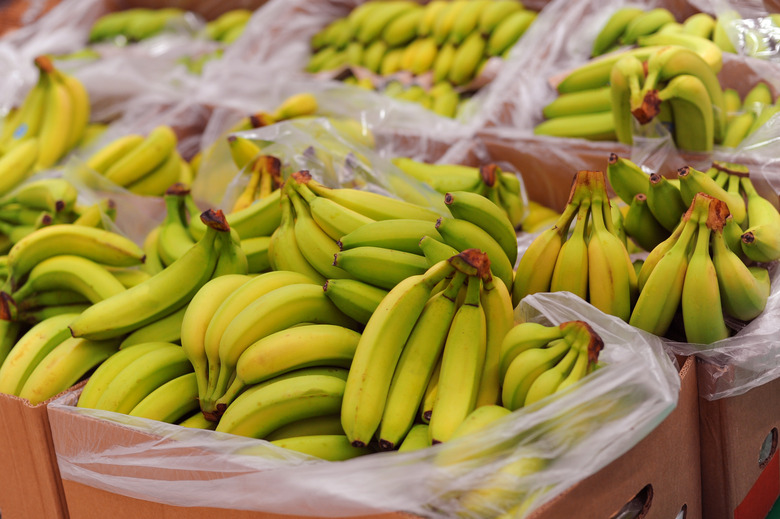Banana Science Projects
Incorporating science projects in to the classroom is a great way for students to view science in action. Students can observe the concepts they are taught about in class so that they have a higher chance of remembering and understanding what they learn. There are several science experiments that can be completed in class using pieces of fruit, such as a banana.
Moldy Food
Moldy Food
Students can learn how quickly different food items become moldy. Some foods won't mold as fast as others. Set a banana on a dish. A chunk of cheese and a slice of bread will also each need to be set on a plate of their own. Finally, pour a glass of milk. Take a survey among the students to find out which foods they think will mold the quickest, and which ones will mold the slowest. Record their answers and set all four items in the same cabinet. Check the foods once each day and make any notes on observations of mold. After one week, draw a conclusion from your observations.
The Ripening of a Banana
The Ripening of a Banana
Grab a bunch of bananas that are still green from your local grocery store, and one banana that is already ripe. Instruct the students to put two green bananas in a paper bag and tape it shut. Label the bag "green, green." The next brown paper bag should contain the ripe banana along with one of the green bananas. Label this bag "green, yellow." Place two green bananas in a plastic zipper bag. You don't need to label it if you don't want to since it is the only set in plastic. Finally, set one green banana on a plate with no wrapping. Ask your students to come up with a hypothesis as to which set of bananas will ripen first and why. Leave the experiment alone and come back to it after five days. Instruct the children to examine each set of bananas to determine which ones ripened the fastest, and which ones were slow to ripen. Draw up a conclusion based on what the class learned from the results.
Bananas and Yeast
Bananas and Yeast
Students can learn about yeast, and how it is a living organism by conducting an experiment on a banana. Peel one ripe banana and discard the skin. Have one student cut the banana straight down the middle so you have two equal halves. Have another students set each banana half in its own plastic zipper bag. Instruct a third student to sprinkle yeast on one of the banana halves. Label that bag "Y" so you know it is the banana with the yeast on it. Close both bags shut and wait three days before opening them back up. Tell the students to notice how the yeast ate away at the banana, and how the other banana still appears to be whole. You can then try this experiment with other fruits as well.
The Barney Banana Project
The Barney Banana Project
Give each student in the class a banana and ask them if they think the banana can be sliced without removing the banana peel. Most of the children will respond with a "no," but if you get a child who says "yes" encourage him to share how he thinks this can be accomplished. Once the children are done guessing, give them each a sewing needle. Instruct them to push the pin in the front layer of the banana skin, moving the needle around to slice the banana. Tell the students not to allow the needle to exit out the back side of the skin. Have the children move their pins down every 1.5 inches and repeat the slicing. Once they have finished, they can peel the bananas to reveal their handiwork.
Cite This Article
MLA
Bodine, Alicia. "Banana Science Projects" sciencing.com, https://www.sciencing.com/banana-science-projects-12747527/. 15 November 2019.
APA
Bodine, Alicia. (2019, November 15). Banana Science Projects. sciencing.com. Retrieved from https://www.sciencing.com/banana-science-projects-12747527/
Chicago
Bodine, Alicia. Banana Science Projects last modified August 30, 2022. https://www.sciencing.com/banana-science-projects-12747527/
